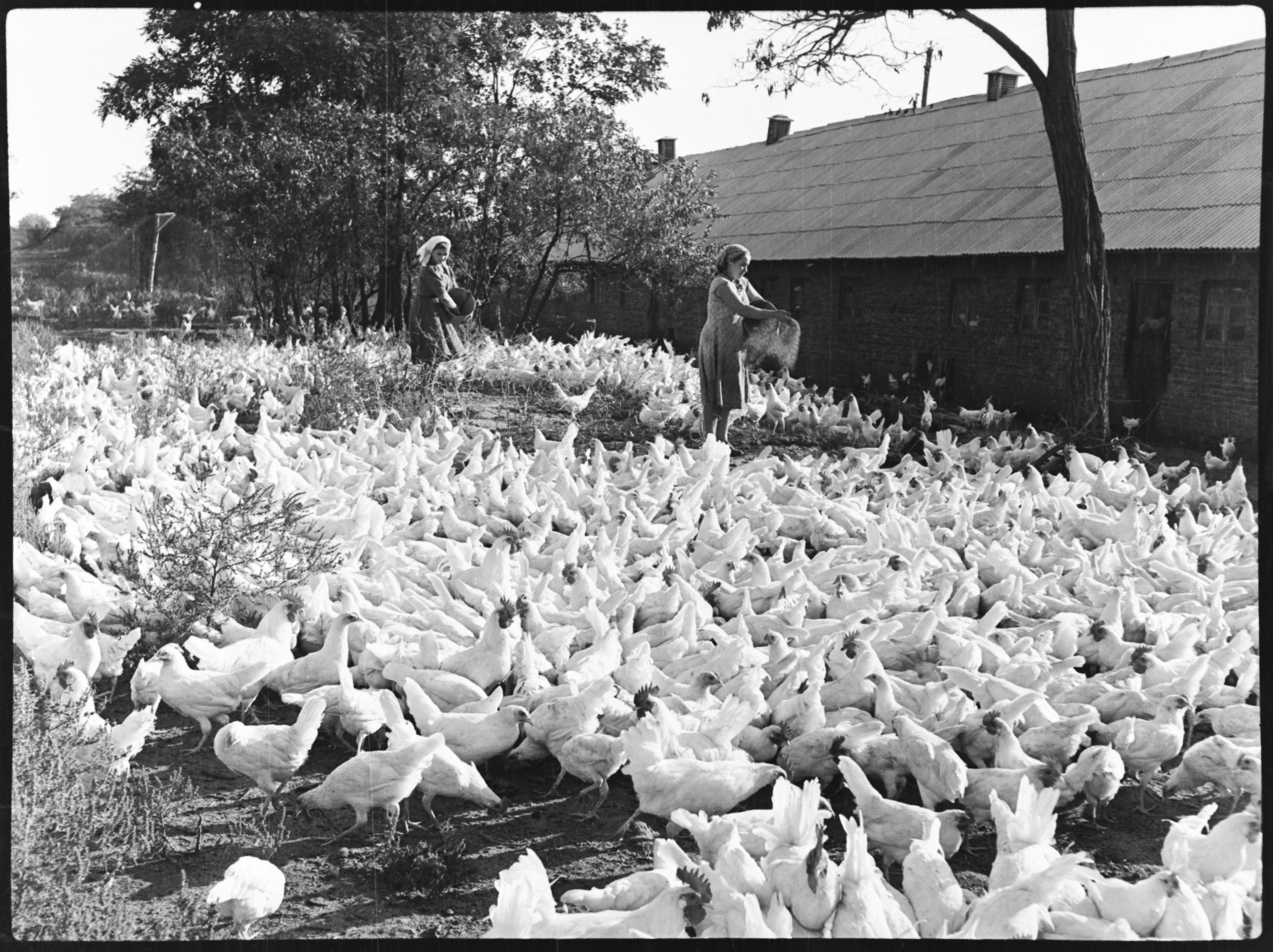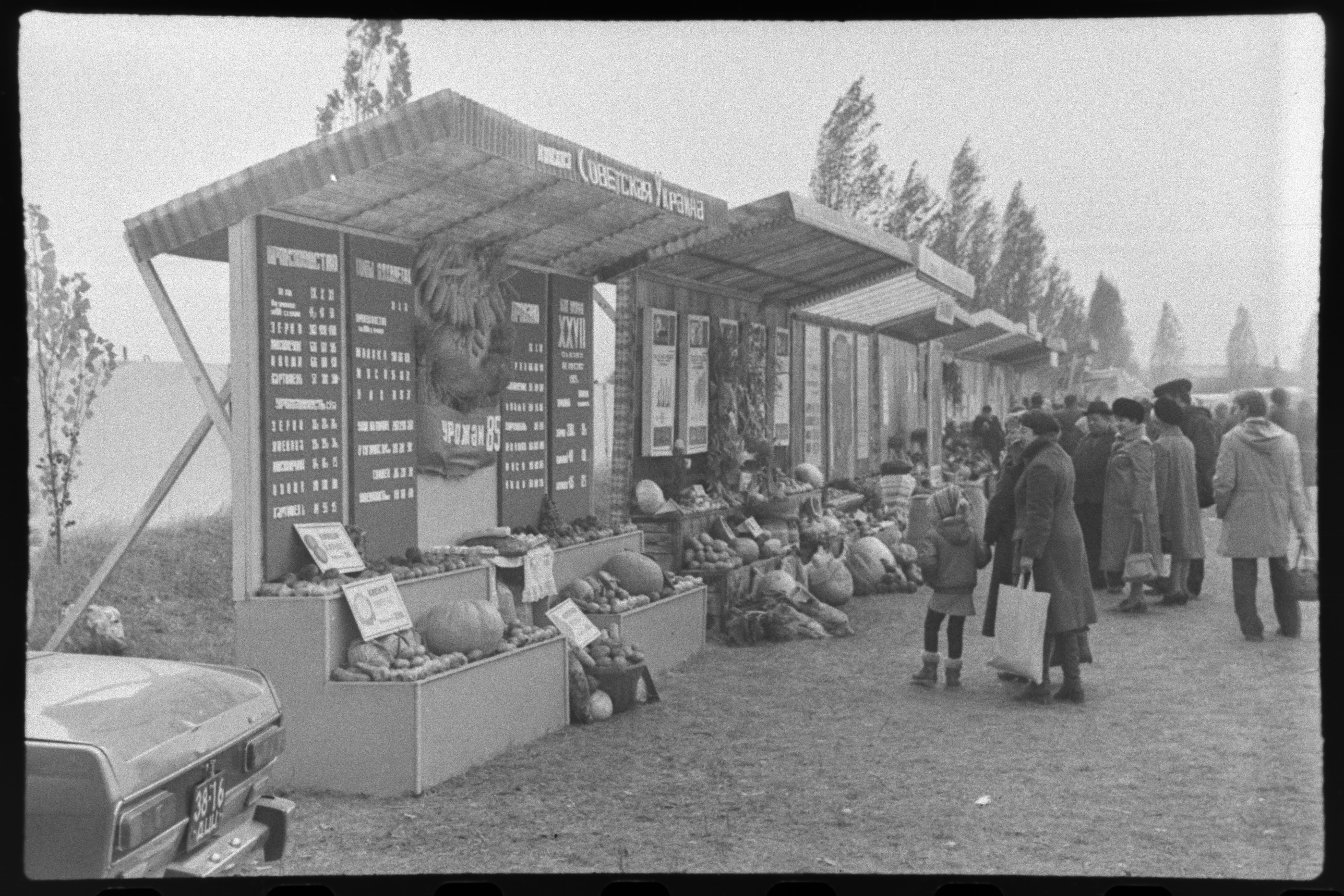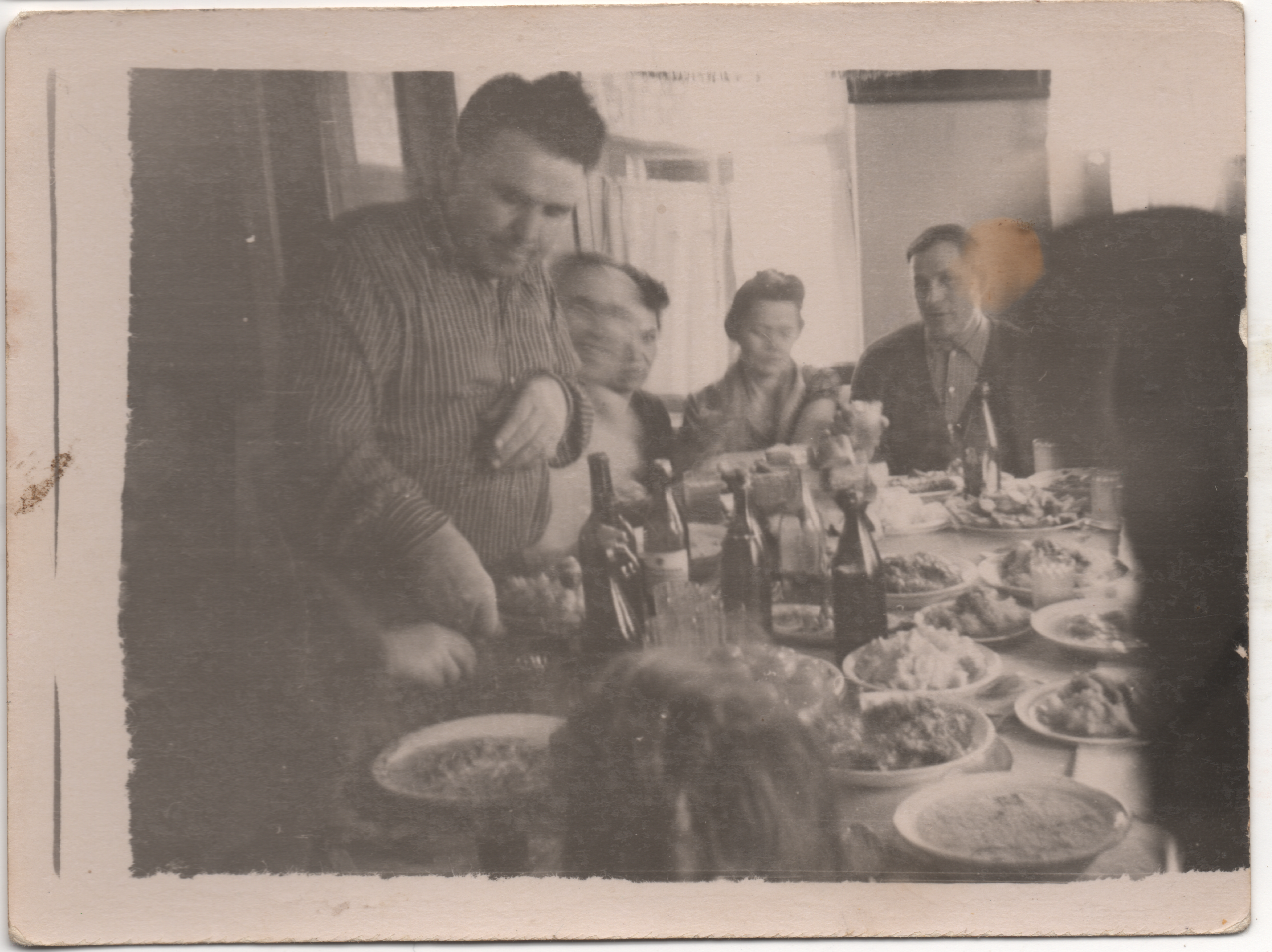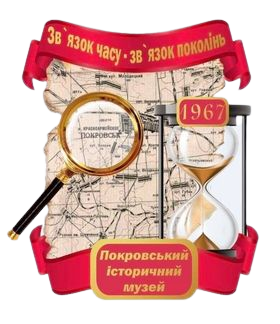In the industrial era, success was understood as the steady increase of production relative to the exploitation of new resources. It was an economy of continuous expansion based on population growth and increased human resources. The needs of an expanding population had to be met. However, industrial success had long been achieved in conditions of chronic material deficit and heavy physical labor. The demonstration of social welfare in the photographs contrasted with the shortages of goods and hardships that burdened daily life.

Chicken farm, Petrovsky state farm at Pryazovia. Photo by: Pavlo Kashkel /Mariupol Local History Museum
Photos presented a utopian future, aspirational conditions of social welfare, rather than lived reality. They captured festive moments rather than everyday routines: visions of crowds (at the fairground) or family feasts (around the dinner table).

Agricultural exhibition in the Donetsk region, 1985. Photo by: Mykola Bilokon /Pokrovsk Historical Museum

Family feast, Kramatorsk, 1957. Photo by: family archive of Kateryna Filonova
It was only with the advent of consumer society in the 1970s and the capitalist turn of the 1990s, that this utopian vision began to be problematized. By then the burden of widespread abundance on the environment and on people’s health had begun to come into focus. Today, thus industrialized mass agriculture shown in photographs is understood to be harmful to the environment and inhumane towards livestock. The idea of restricting growth and “sustainable development” (geared towards the reproduction of resources and increased resource efficiency) became popular only after the lived memory of famine and deficit had faded. Practices of upcycling were replaced by a “waste culture” that encouraged individuals to constantly buy new things and generate waste. Today old photographs generate all kinds of nostalgia: some recall the factories and collective farms that produced huge yields; others long for a plastic-free life among long-lasting things, although this was sometimes inconvenient. However, both types of nostalgia are still a view of the past from the vantage point of today.




